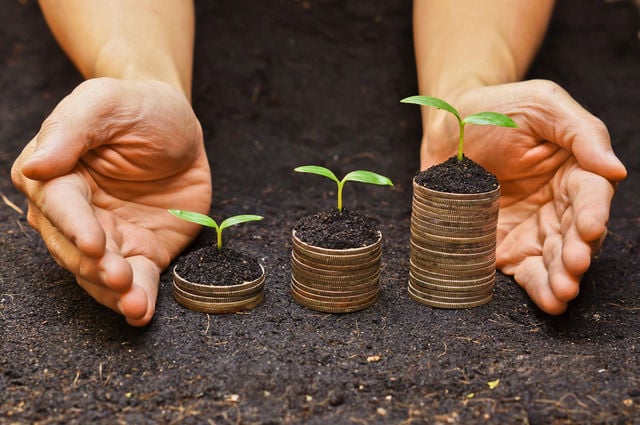Driving Resiliency and Sustainability in Hospitality: Five Priorities for 2021
23 experts shared their view
Recovery, resilience, recalibration, or bouncing back are a few examples of keywords that are at the center of any discussion surrounding the hospitality industry's economic prospects this past year. However uncertain the economic future may be, major crises of earth systems are unabated to date. While similarities exist between resiliency and sustainability (i.e. both concepts refer to the state of a system or organization over time in response to instabilities), there are notable differences, and conflicts, in the two concepts (i.e. achieving short-term economic resiliency at the expense of socio-environmental wellbeing). Looking forward, all eyes are on resiliency (growth!) in hospitality but how do we decouple growth from impacts, most notably carbon emissions? How do we ensure that sustainability is a component of resiliency (or vice versa)? What are the five priorities the hospitality industry should set to tackle resiliency and sustainability at the same time in 2021?
2021: “Looking Under the Hood”
Resiliency in sustainability means having the structure and process to withstand the various physical, regulatory, and customer preference issues that will come at your organization (think not only storms but plastic, modern slavery, racial equality), and the list and depth of issues will increase in the next decade. For 2021, it's all about looking under the hood: more critical thought and scrutiny will be given to things that we were complacent about, or nobody mainstream really dug any further past the shiny report. These are the 5 where you'll need to look under the hood, because your investors, lenders, customers, regulators, and distribution channels also will be.
1. Diversity & Inclusiveness
Why this is important in 2021: if you don't know why this is important, then you probably didn't know there was a global virus pandemic either.
Looking under the hood: most western-based hotel chains have longstanding D&I programs. But have they made progress? More eyes will be on how D&I is now at the top levels of the company and also breaking out specific metrics to address racial equality, instead of bundling diversity metrics as encompassing “anyone-except-over-40-hetero-white-males-with-no-disabilities-and-who-have-not-fought-in-a-war.” Be prepared for some awkward but overdue, necessary conversations in 2021.
2. Biodiversity
Why this is important in 2021: several global initiatives and frameworks are coming out next year, and existing ones that have biodiversity metrics disclosure like SASB are gaining traction within the investor community to analyze biodiversity risks and impacts. Also, the circular mindset of “where did this come from, and where is it going when I'm done with it?” that started with plastic will continue and people realize the environmental impact of food, FF&E, and everything from a reclaimed island resort development to sunblock.
Looking under the hood: most companies will indicate that biodiversity is a priority and pair that with some anecdotal actions taken. But more scrutiny will be given to whether a company is really assessing quantitatively and addressing its impacts meaningfully, including in its supply chain.
3. Location-Based Climate Risk Assessment
Why this is important in 2021: climate impacts are real and more pressing. Disruptive weather, water scarcity, wildfires, floods, sea-level rise, and all regulatory actions relating to them are going to increase. Key investor frameworks like SASB, TCFD, and GRESB will cause due diligence to include things like climate risk and water risk.
Looking under the hood: Companies often make broad statements in annual reporting and risk disclosure about this, but it's no longer meaningful to just say “climate change is a risk.” Now it will be a matter of “which specific risks are highest in which properties, how do you embed this into your risk management, and what are you planning to do about it?”
4. Measuring social impact
Why is this important in 2021: the economic contribution of hospitality and tourism is now well established. However, the pandemic has shown the challenges when that economic benefit is, even for a short time, wiped out. In addition, often hotels can be perceived as 'separate' from the local community. As consumers demand more authenticity, purpose, and positive local impact, hotels will need to up their game in how they measure and communicate it.
Looking under the hood: many companies have well-established community engagement and donation programs, but more emphasis will be needed for quantifying the outcomes: the impact on education, healthcare, wellness, poverty reduction, hygiene, and equality. In the future it will be about communicating the 'S' of ESG, in particular in terms of the Sustainable Development Goals, using metrics rather than stories.
5. Closing the “Performance Gap”
Why this is important in 2021: the last decade was all about the “transparency gap” to get businesses to publicly disclose what they are doing on various sustainability issues and demonstrate that they're managing them. This decade is about the “performance gap” of companies taking meaningful steps toward big issues like decarbonization, deforestation, diversity, social impact, and the purpose of a hotel in the community.
Looking under the hood: Before you could get points and be one of the top-rated sustainable companies just for having good disclosures but no renewable energy or real game-changing plan to reduce waste. Now that everyone will be disclosed, the focus is on comparing performance and meaningful action, and you will be compared among peers on what and how well you're doing much more closely now.
Finally, an honorable mention to the Global Sustainable Tourism Criteria (GSTC). The body has gained immense traction in the past 2 years among governments, distribution channels, and large industry players, and the momentum will continue strong in 2021 as it becomes the de facto framework and standard for sustainability. 2021 will be the time to look under the hood of GSTC itself and the processes it contains, and separate out who is applying the criteria best-in-class, versus who is doing a great job of ticking boxes.


